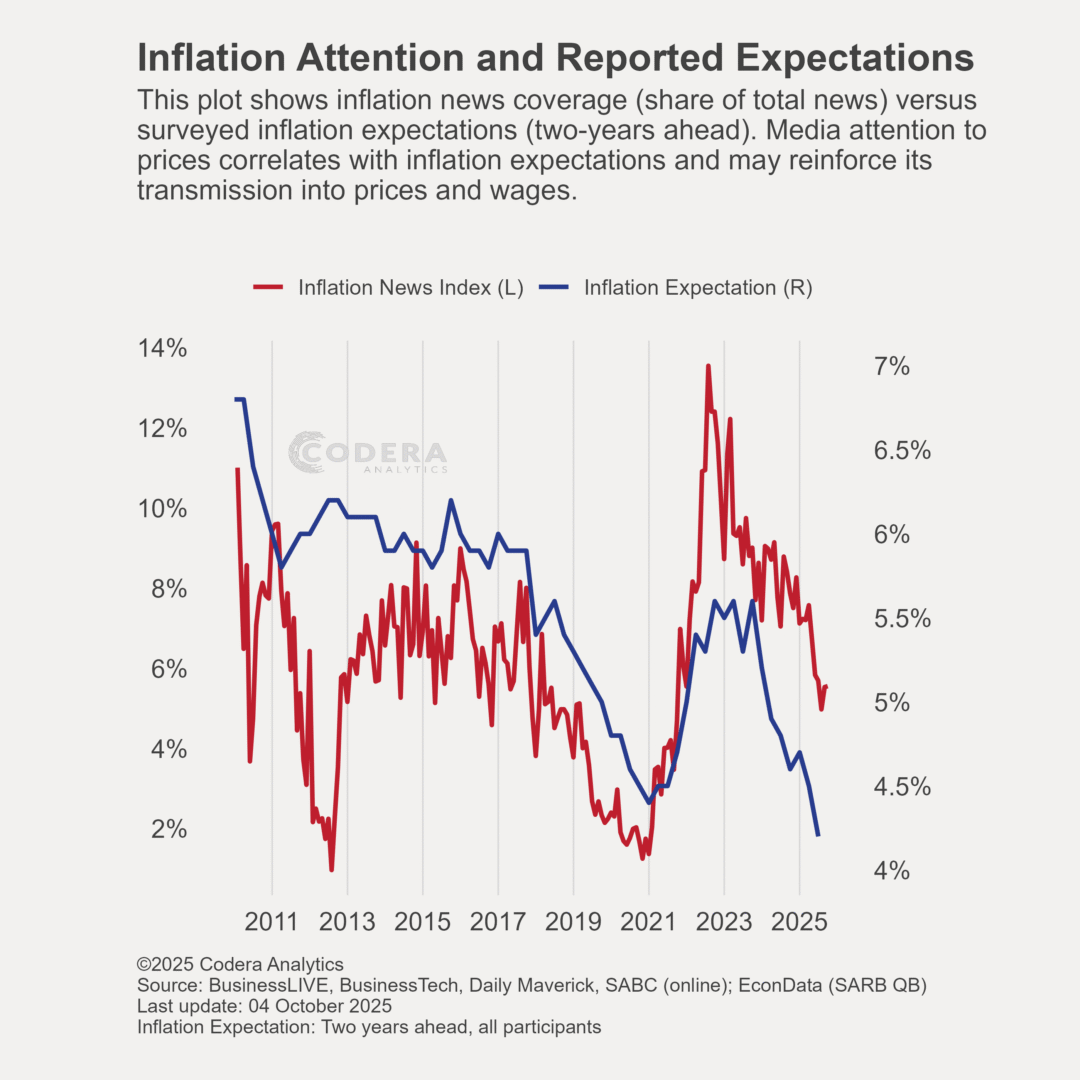Today’s post shows that inflation expectations in South Africa, Canada and South Korea have reacted more strongly to inflation deviations from the central bank’s inflation target than in other countries, suggestive of less well-anchored expectations. The first chart presents a summary of the correlations between changes in inflation expectations and difference between actual inflation and the target as a simple way to assess how anchored expectations are.

The other plots show historical data for the countries considered. Trend lines between inflation expectations and inflation deviations are flat for the US, UK, Sweden, Mexico. Israel, New Zealand, Australia, the Czech Republic, Switzerland and Russia (noting the existence of large outliers). A positive trend line suggests that as inflation moves away from the target, expectations also shift, indicating less firmly anchored inflation expectations. Trend lines are positive for South Africa, Canada, India and South Korea. The charts also reveal varying degrees of inflation outcome dispersion for the countries considered. High inflation dispersion has implications for the optimal inflation target and the optimal approach to inflation targeting.






Footnotes
The chart below also shows how the results change when using a longer time span for countries that have longer data samples.

Sub-sample analysis and using alternative calculations for South Africa can be found here.

